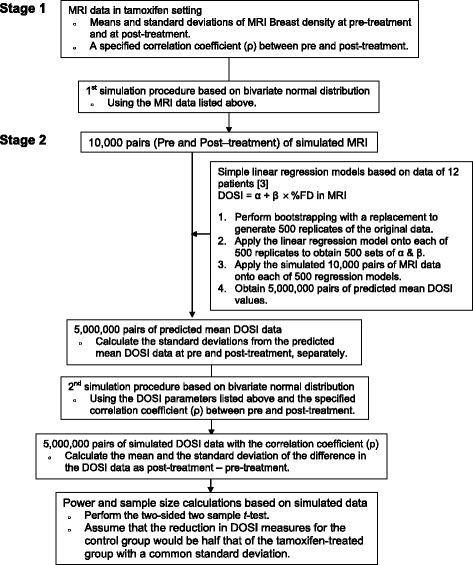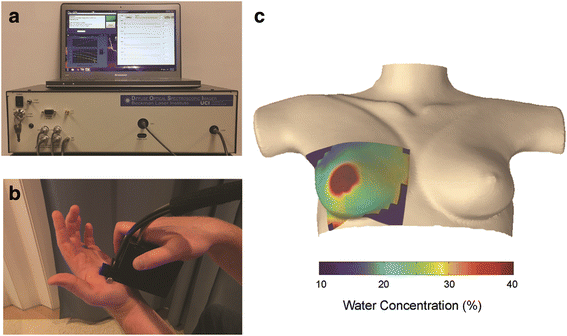Sample size and power determination when limited preliminary information is available
- PMID: 28446127
- PMCID: PMC5406943
- DOI: 10.1186/s12874-017-0329-1
Sample size and power determination when limited preliminary information is available
Abstract
Background: We describe a novel strategy for power and sample size determination developed for studies utilizing investigational technologies with limited available preliminary data, specifically of imaging biomarkers. We evaluated diffuse optical spectroscopic imaging (DOSI), an experimental noninvasive imaging technique that may be capable of assessing changes in mammographic density. Because there is significant evidence that tamoxifen treatment is more effective at reducing breast cancer risk when accompanied by a reduction of breast density, we designed a study to assess the changes from baseline in DOSI imaging biomarkers that may reflect fluctuations in breast density in premenopausal women receiving tamoxifen.
Method: While preliminary data demonstrate that DOSI is sensitive to mammographic density in women about to receive neoadjuvant chemotherapy for breast cancer, there is no information on DOSI in tamoxifen treatment. Since the relationship between magnetic resonance imaging (MRI) and DOSI has been established in previous studies, we developed a statistical simulation approach utilizing information from an investigation of MRI assessment of breast density in 16 women before and after treatment with tamoxifen to estimate the changes in DOSI biomarkers due to tamoxifen.
Results: Three sets of 10,000 pairs of MRI breast density data with correlation coefficients of 0.5, 0.8 and 0.9 were simulated and generated and were used to simulate and generate a corresponding 5,000,000 pairs of DOSI values representing water, ctHHB, and lipid. Minimum sample sizes needed per group for specified clinically-relevant effect sizes were obtained.
Conclusion: The simulation techniques we describe can be applied in studies of other experimental technologies to obtain the important preliminary data to inform the power and sample size calculations.
Keywords: Breast density; Diffuse optical spectroscopic imaging; Magnetic resonance imaging; Power and sample size calculation; Tamoxifen.
Figures




References
MeSH terms
Substances
Grants and funding
LinkOut - more resources
Full Text Sources
Other Literature Sources
Medical

